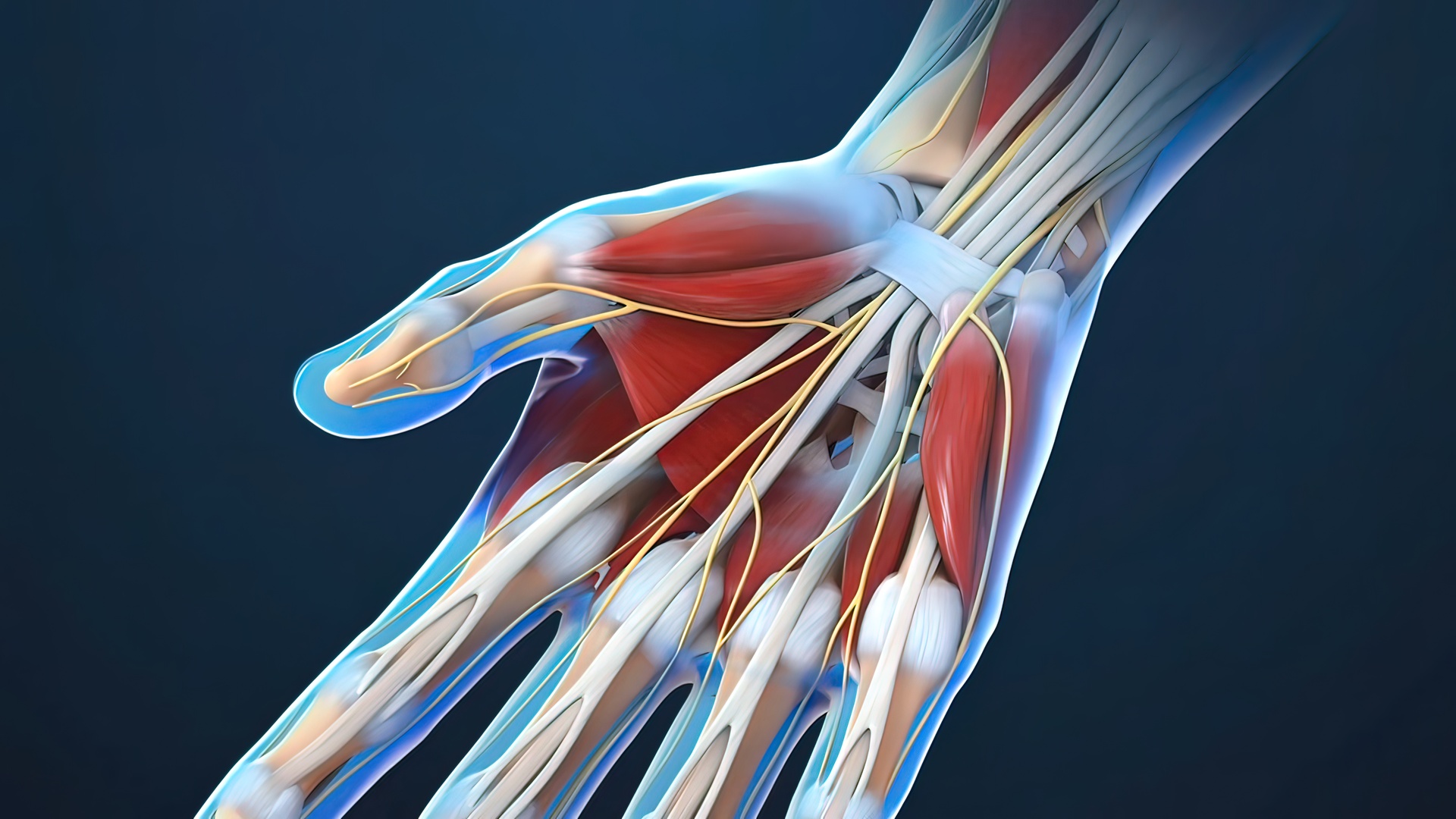
young girls playing tennis game indoori in tennis court
If you suffer from carpal tunnel syndrome (CTS), the pain and numbness in your hand can be debilitating. As symptoms progress, you can develop muscle weakness and loss of function. You may have difficulty holding a pencil, opening a jar, or picking up a coin.
Our hands are so important to us. What is Carpal Tunnel Syndrome? Carpal tunnel syndrome is a nerve problem in which the median nerve becomes entrapped (compressed) as it passes through the bones of the wrist. The median nerve innervates the muscles within the hand and forearm. It is responsible for the sensation of the thumb, index, middle, and radial half of the middle finger. If symptoms are experienced in the pinky, upper arm, shoulder, or neck you probably don’t have CTS.
What Causes Carpal Tunnel Syndrome?
Carpal tunnel syndrome frequently accompanies repetitive strain. Static postures often contribute to this problem. Office workers who spend many hours sitting at a computer often hold their wrists rigidly for while using the keyboard or mouse. Professional musicians, carpenters, and assembly line workers also have similar challenges and are prone to CTS. Repetitive strain and static postures typically cause shortening of the muscles of the hand and their connective tissue wrappings. These myofascial shortenings alter the biomechanics of the hand and set the stage for CTS. Carpal tunnel frequently occurs during pregnancy due to increased swelling of the wrist that causes compression of the median nerve.
Anatomical Structures

Anatomically, the transverse carpal ligament spans across the eight carpal bones of the wrist The carpal tunnel is the passageway for the median nerve and tendons to travel through the wrist. Additionally, the fascial layers of the hand and forearm play an important role in wrist mobility and function. These include the flexor retinaculum and the interosseous membrane of the forearm.
Carpal Tunnel Syndrome occurs when the myofascia of the hand, wrist, and transverse carpal ligaments shorten. Myofascial shortening impairs mobility. The median nerve and soft tissue structures of the carpal tunnel become adherent and inflamed. The entrapped median nerve becomes the source of numbness, tingling, pain, and muscle weakness in the hand.
Surgery treats this problem by cutting the transverse carpal ligament. While this procedure is often effective, CTS can recur because the underlying issues have not been addressed. Additionally, the scar tissue resulting from surgery can be problematic over time.
Rolfing and Carpal Tunnel Syndrome
The Rolfing Technique of Structural Integration is a therapeutic process during which the practitioner restores span and mobility to the structures of the forearm and hand. This is achieved through sustained pressure through the Rolfer’s hands. As the alignment and mobility are restored in the structure, biomechanics in the wrist improve. Many people experience positive results quickly, however long-lasting results require a course of treatment.
Rolfing realigns the body over a ten-session series. Rolfing is not a symptom-oriented approach. In Rolfing, the objective is to restore length and mobility to the whole body. By releasing chronic stress within the myofascia many problems including the nerve compression of CTS can be healed.
Rolfing has shown itself to be an effective and gentle treatment for CTS. In future articles, we will share self-help techniques that include stretches and sitting posture to alleviate further episodes and prevent CTS.
The contents in this article are not meant to be diagnostic or prescriptive. Carpal Tunnel Syndrome is often complex, and a physician should always be consulted before choosing a course of treatment.
Also Read:
Rolfing and Rotator Cuff Injuries
